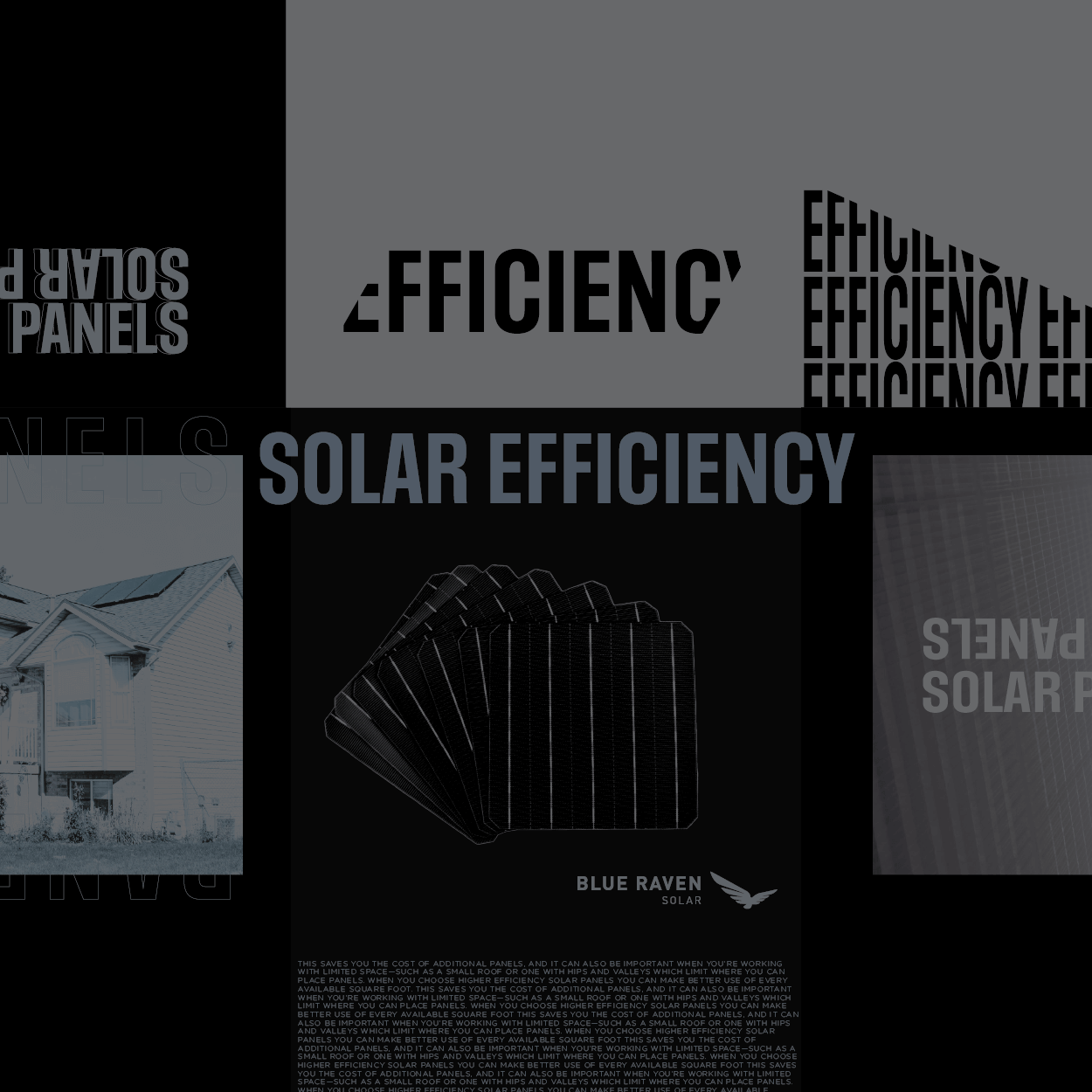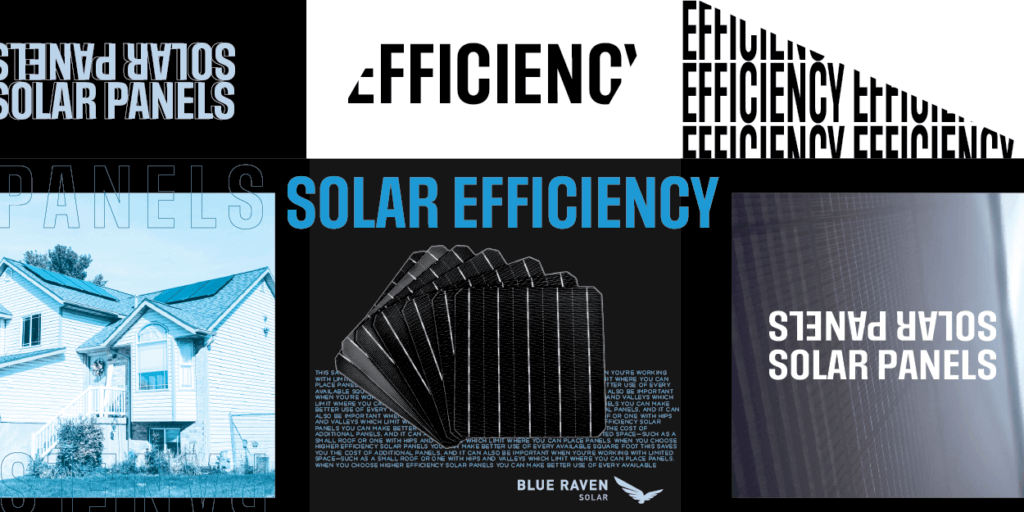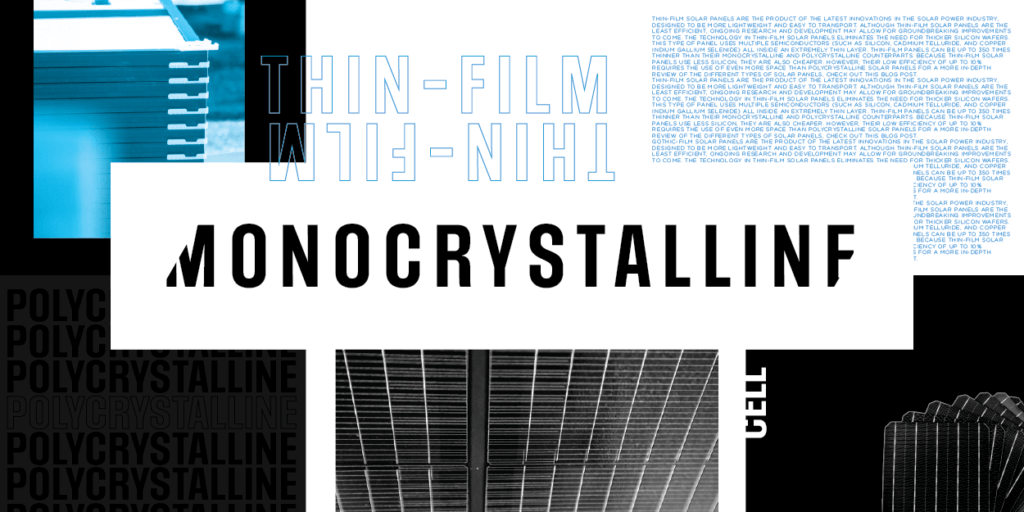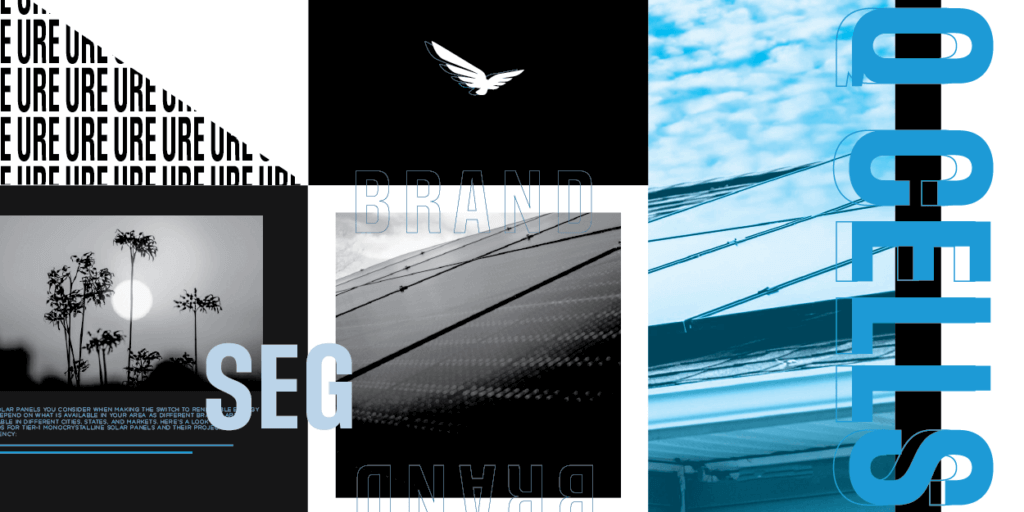
In 2022 alone, Americans installed enough residential solar panels to power 22 million homes. Many more are looking to join the renewable energy movement, and a basic understanding of how solar technology works and which solar panels are the most efficient is an important part of the decision-making process. Although installation experts are a great resource, doing your own research helps you more confidently decide which equipment will perform the best for your budget, home, and lifestyle.
One factor to consider when evaluating renewable energy as a power source is solar panel efficiency—a term you will likely encounter often in your research around installing solar panels on your home. This article will teach you how solar panel efficiency works and help you become familiar with the most efficient solar panels.
What is Solar Panel Efficiency?
First, let’s clarify what solar panel efficiency actually means.
Solar efficiency is the percentage of sunlight hitting the surface of a solar cell or panel which is converted into usable electricity through photovoltaic technology. The higher the efficiency, the better the solar cells or panels are at harnessing solar energy.
As solar panels are made up of individual solar cells (usually 60 to 96 per panel), you can sometimes find different efficiency measurements for the same technology. It’s important to understand the efficiency of a solar cell does not equate to the efficiency of the panel or system.
Solar panels generally have efficiency rates between 15-20%, whereas solar cells can reach up to 42% in some cases. However, unless otherwise stated, solar cells are generally tested under laboratory conditions, minimizing compromising factors (which we’ll discuss in a minute).

Why Does Solar Panel Efficiency Matter?
One of the biggest factors in the cost of your rooftop solar system is the number of panels needed to meet your energy needs. The efficiency of each panel is important because the more efficient each one is the more energy it will create, and each panel contributes to the energy the entire system generates. With higher-producing panels, you’ll need fewer panels installed on your roof.
This saves you the cost of additional panels, and it can also be important when you’re working with limited space—such as a small roof or one with hips and valleys which limit where you can place panels. When you choose higher efficiency solar panels you can make better use of every available square foot.
What Determines Solar Panel Efficiency?
Solar panel efficiency can be affected by a number of internal as well as external factors. Let’s take a look at each.
Internal Efficiency Factors
These are factors inherent to the panels themselves. They include the type and efficiency of the PV cells, how well these cells work together as a system within the panel and the greater solar array, and the materials used. PV cell efficiency is affected by the design of the solar cell and silicon type. If you are unfamiliar, silicon is a photosensitive semiconductor used in photovoltaic cells.
Other internal factors include the efficiency of the inverter installed with the solar system and thermal cycling. The inverter converts the direct current (DC) power generated by the solar panels into alternating current (AC), which is what is used to power your home. Some energy loss occurs in this transition; however, with the right wiring this loss is typically minimal. Thermal cycling tests the system’s ability to withstand a wide temperature range. When temperatures change, the different components of the system can expand or contract, affecting its efficiency.
The way the solar panels are positioned also matters. South facing-roofs are ideal as they receive the most sunlight, and panels should also be angled at 45 degrees for optimal production.

External Efficiency Factors
Solar panels operate on sunshine, so they’re typically outside and exposed to the elements, introducing a number of external factors affecting efficiency.
- Weather – Different weather phenomena affect panels in different ways. For example, snow can accumulate on panels and reduce their ability to absorb sunlight, extended cloud cover can do the same, and hail can damage solar panels. However, wind can cool panels down, improving their efficiency.
- Temperature – Solar panels prefer moderate temperatures with average peak efficiencies between 59 and 95 degrees. If the surface of the panels heat up to higher than 149 degrees, efficiency will likely decline.
- Dust and Grime Buildup – Being outside exposes each panel to dirt and grime. When this builds up on the surface of the panels it can decrease the ability of solar cells to absorb sunlight, thus decreasing efficiency.
All of these factors together determine how capable your solar panels are at converting sunlight into electricity, which can be used to power household appliances, lights, and other electronic devices.
How Efficient are Today’s Solar Panels?
As recently as the early 2000s, solar panels were 15% efficient on average, if not less. However, innovations in photovoltaic technology over the past two decades have significantly improved solar panel performance. Solar panel efficiency now falls between 15 and 22%, while high-efficiency solar panels can reach up to 23%.
Solar panels are not 100% efficient because they cannot absorb energy from the entire solar spectrum. The technology is not there yet either, though progress is being made toward reaching the 50% efficiency milestone. In a lab, a record-breaking solar panel achieved a 47% efficiency rate, and panels have also achieved 40% rates in real-world conditions. Efficiency rates will rise as time goes on, but choosing a high-efficiency panel is a good choice no matter the current rates.
High-efficiency solar panels generate more watts per square foot, which means less surface area may be required to collect enough sunlight. As homeowners have less room for solar panels on their roof—as compared to commercial property owners—high-efficiency solar panels are an attractive option for residential installations.
It’s important to keep in mind higher efficiency is not always an indicator of better solar panel quality. Build quality greatly impacts the reliability and performance of your solar panels. Problems caused by poor manufacturing detract from the benefits of higher efficiency. When evaluating adding a custom solar panel system, consider more than efficiency.
It’s also important to choose solar panels manufactured and sold by proven, reliable companies who can uphold the 10 to 25-year warranty offered with most solar systems. In the industry, these companies hold the “tier-1” designation, indicating they’ve been in business for at least five years, have secure financial standing, and use mechanical manufacturing techniques and strong vertical integration. Their automated manufacturing techniques decrease the likelihood of defects in the panels, and the companies’ reputations reassure if issues do arise, they will make it right.

Which Solar Panels are the Most Efficient?
With an understanding of the basics of solar panel efficiency, let’s look at the top three options for high-efficiency solar panels.
1. Monocrystalline
Monocrystalline panels are considered the most efficient option on the market. They are made from pure silicon in a single-crystal format, which allows for better flow of electricity throughout the panel. Residential homes most often have monocrystalline panels installed.
Monocrystalline panels also save the most space as high-efficiency solar panels require less surface area to generate sufficient electricity. Monocrystalline panels are also available in three different sizes, allowing installers to fit the smallest panels on homes with less space to offer. This makes it easier for installers to add the maximum number of panels to a roof to cover or exceed the homeowner’s current energy usage.
2. Polycrystalline
Polycrystalline panels are more affordable than monocrystalline panels. Although you might think having more crystals is better, polycrystalline cells are actually less efficient than monocrystalline cells.
Polycrystalline panels are made from fragmented silicon crystals which have been melted together, rather than a single, pure silicon crystal. Each cell in polycrystalline panels has less available room for electron flow, resulting in lower efficiency.
Because this type of panel is less efficient, it requires more surface area and may not be ideal for residential properties. Commercial properties and solar farms typically use polycrystalline panels because they give up more space in exchange for cost savings.
3. Thin-Film
Thin-film solar panels are the product of the latest innovations in the solar power industry, designed to be more lightweight and easy to transport. Although thin-film solar panels are the least efficient, ongoing research and development may allow for groundbreaking improvements to come.
The technology in thin-film solar panels eliminates the need for thicker silicon wafers. This type of panel uses multiple semiconductors (such as silicon, cadmium telluride, and copper indium gallium selenide) all inside an extremely thin layer. Thin-film panels can be up to 350 times thinner than their monocrystalline and polycrystalline counterparts.
Because thin-film solar panels use less silicon, they are also cheaper. However, their low efficiency of up to 10% requires the use of even more space than polycrystalline solar panels.
For a more in-depth review of the different types of solar panels, check out this blog post.
Which Solar Panel Type is Best?
At Blue Raven Solar, we install tier-1 monocrystalline solar panels. We recommend these panels because they’re the most efficient and longest lasting, and they can be configured to make the most of your roof to meet or exceed your current energy usage.

Which Solar Panel Brand is Most Efficient?
The solar panels you consider when making the switch to renewable energy will depend on what is available in your area as different brands are available in different cities, states, and markets. Here’s a look at the top brands for tier-1 monocrystalline solar panels and their projected efficiency:
- Q CELLS: 17-25% efficiency rate
- URE: 18-21% efficiency rate
- SEG Solar Inc.: 20-21% efficiency rate
- CertainTeed: 17-20% efficiency rate
- Jinko: 18-21% efficiency rate
- REC: 17-21% efficiency rate
- SunPower Maxeon: 21-30% efficiency rate
- Trina: 16-20% efficiency rate
How Can I Install the Best System on My Home?
When you partner with Blue Raven Solar to add a rooftop solar system, our team of expert designers will use 3D software to optimize a solar panel layout for your home.
Ready to make the switch to solar power?



Sorry, the comment form is closed at this time.